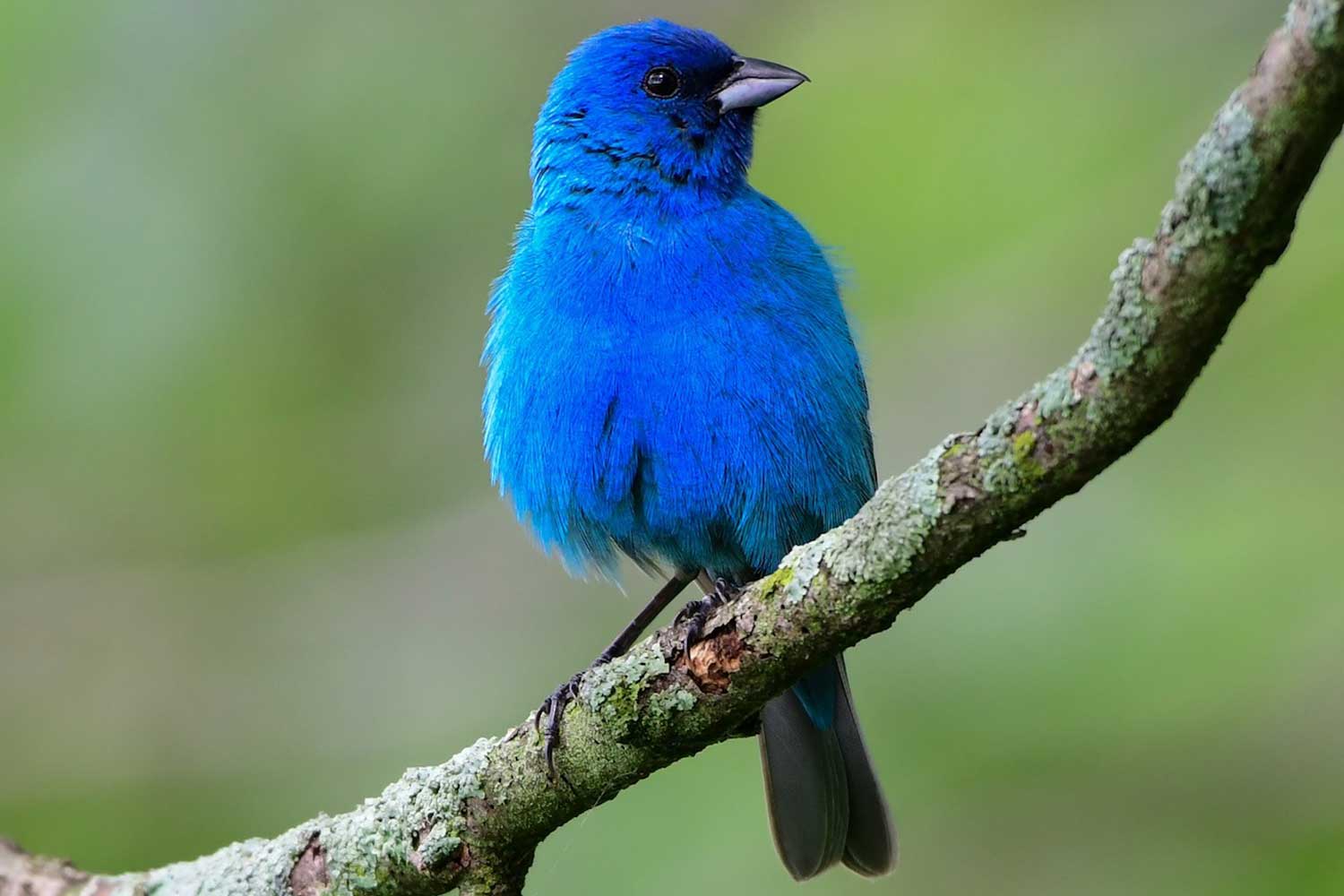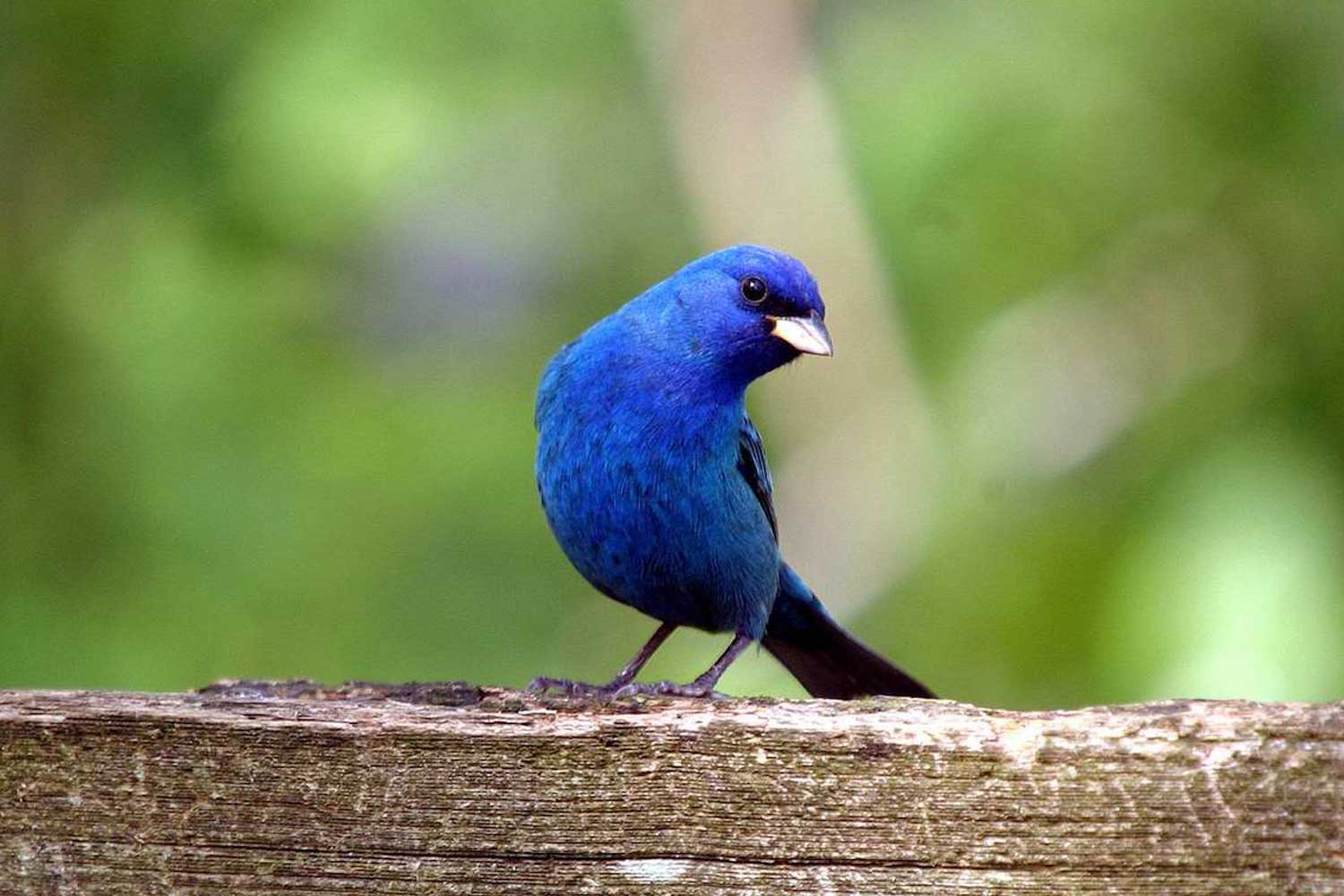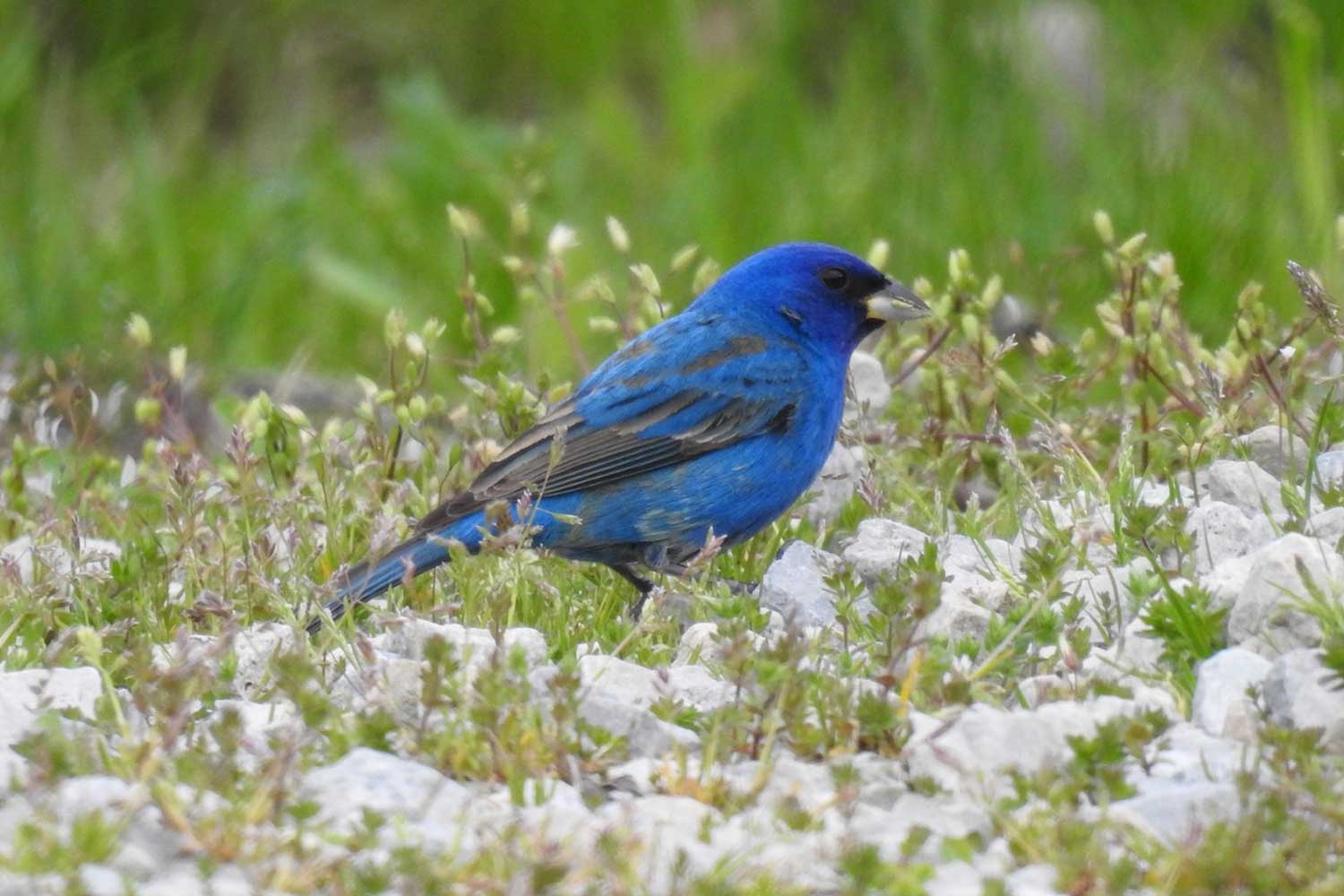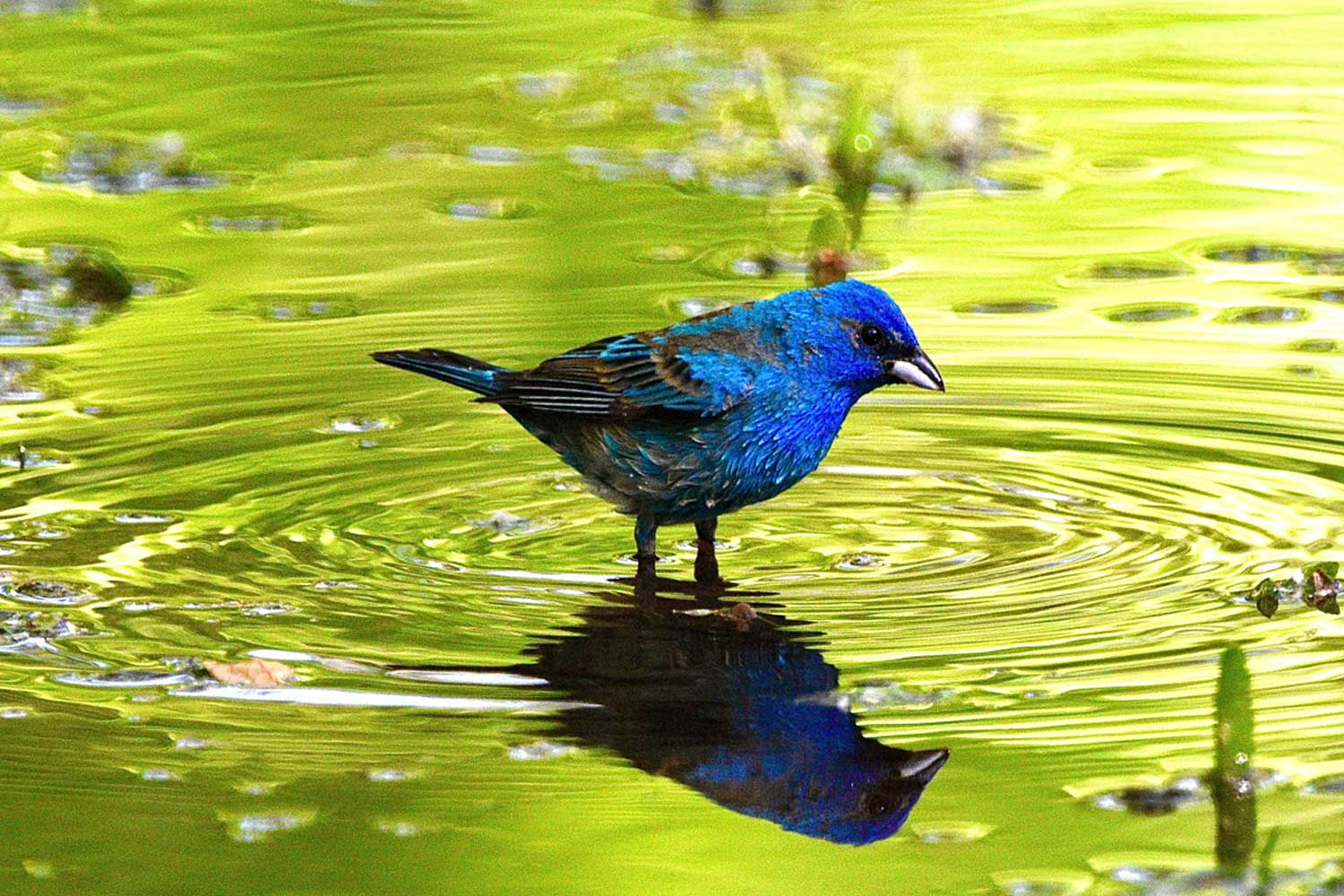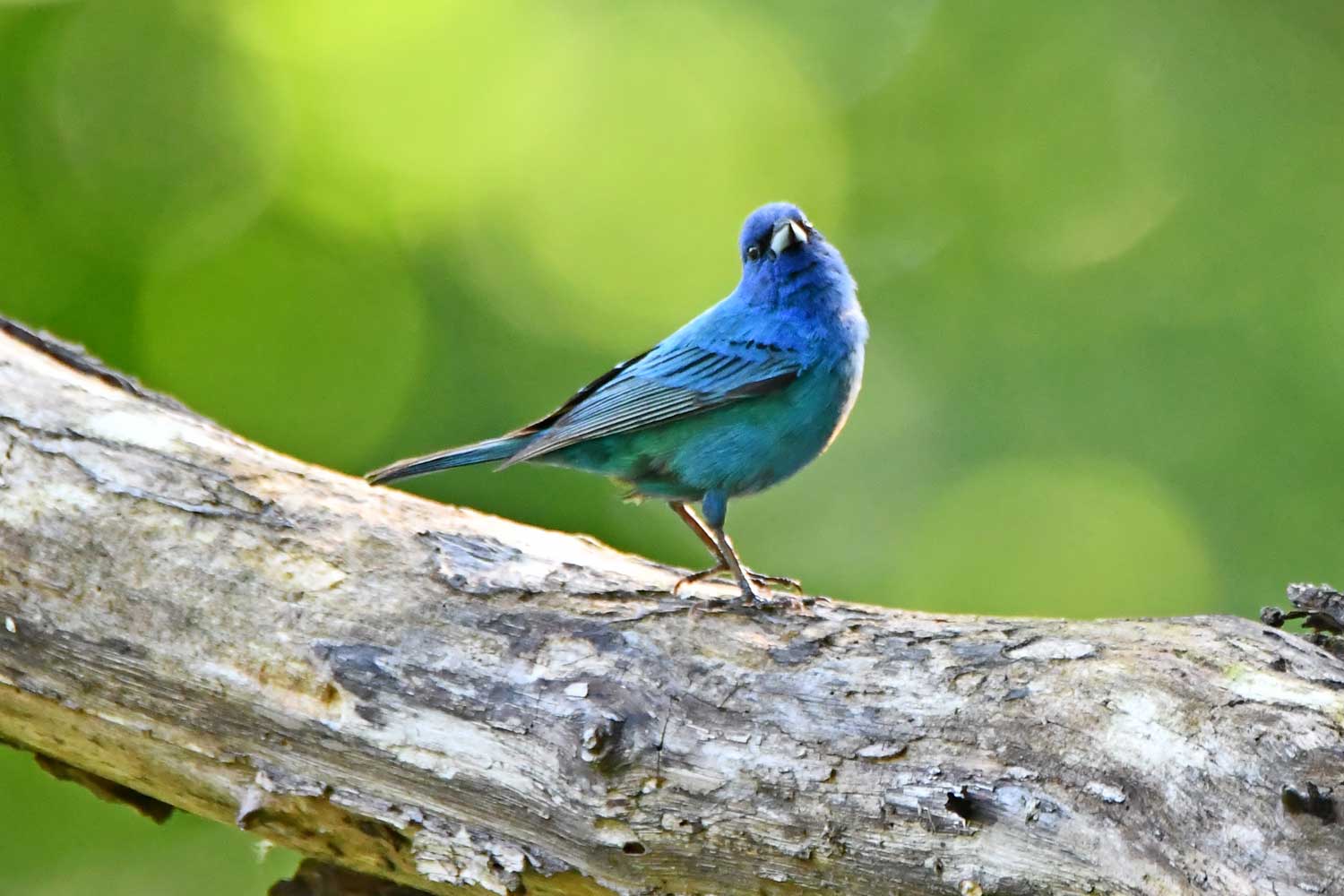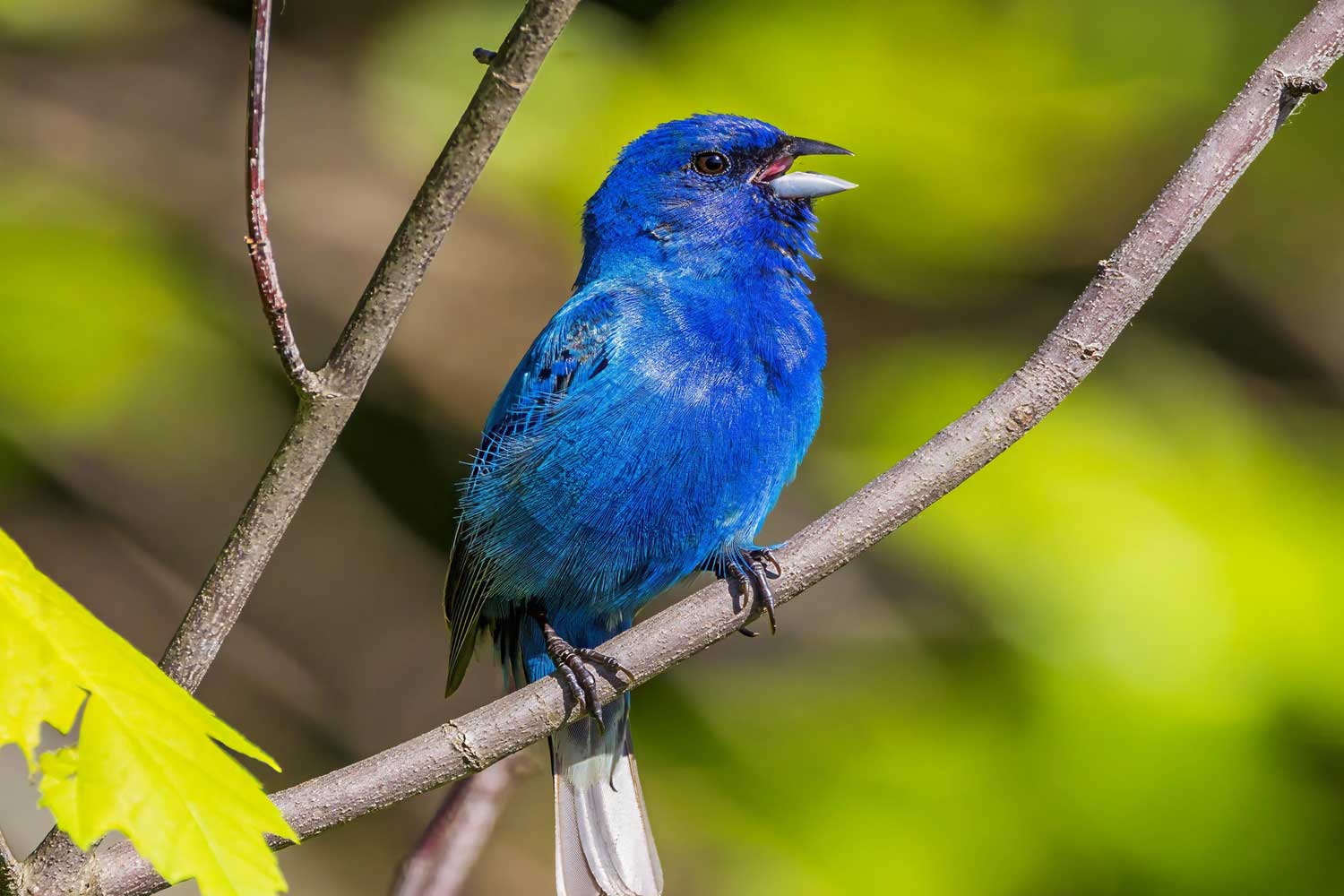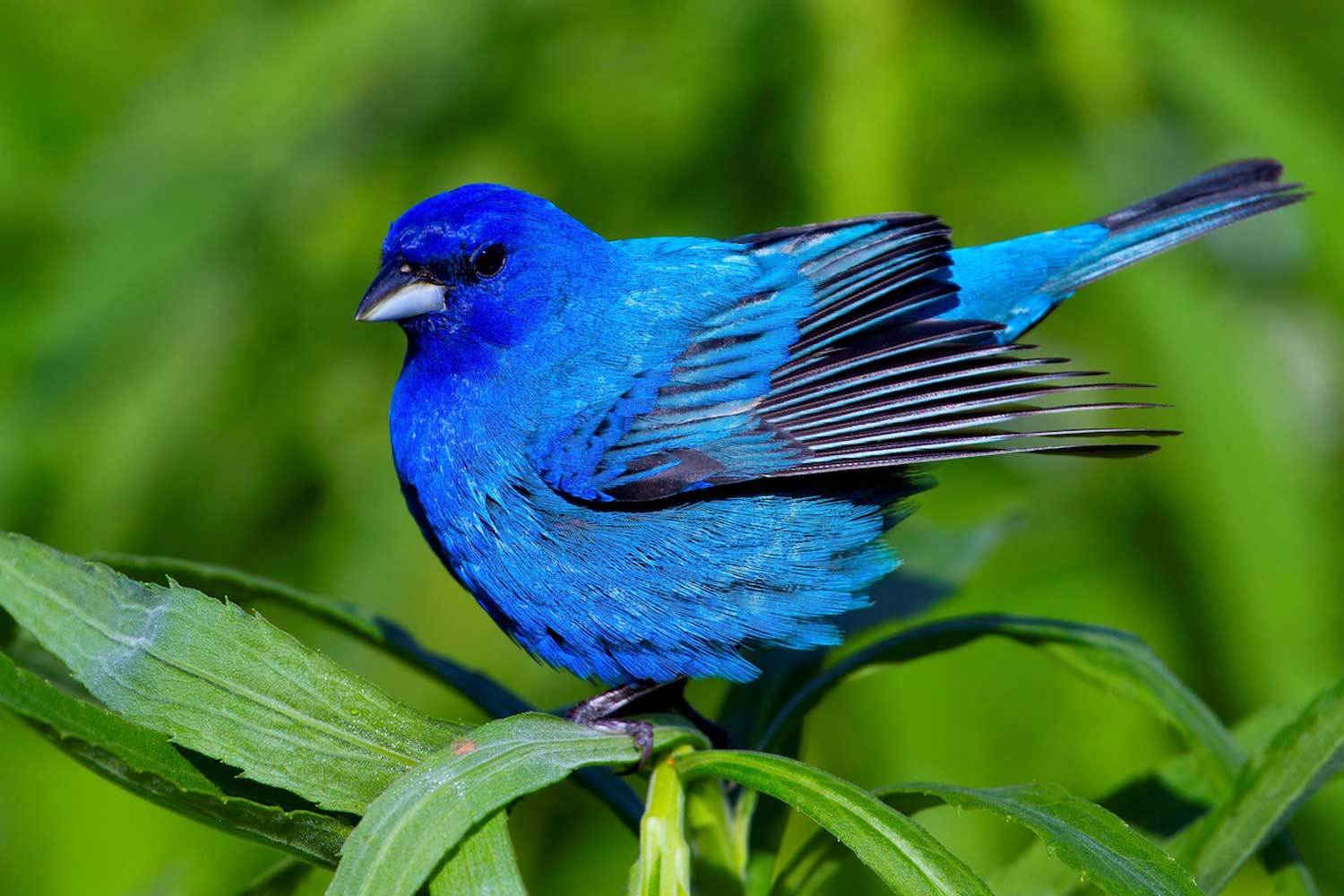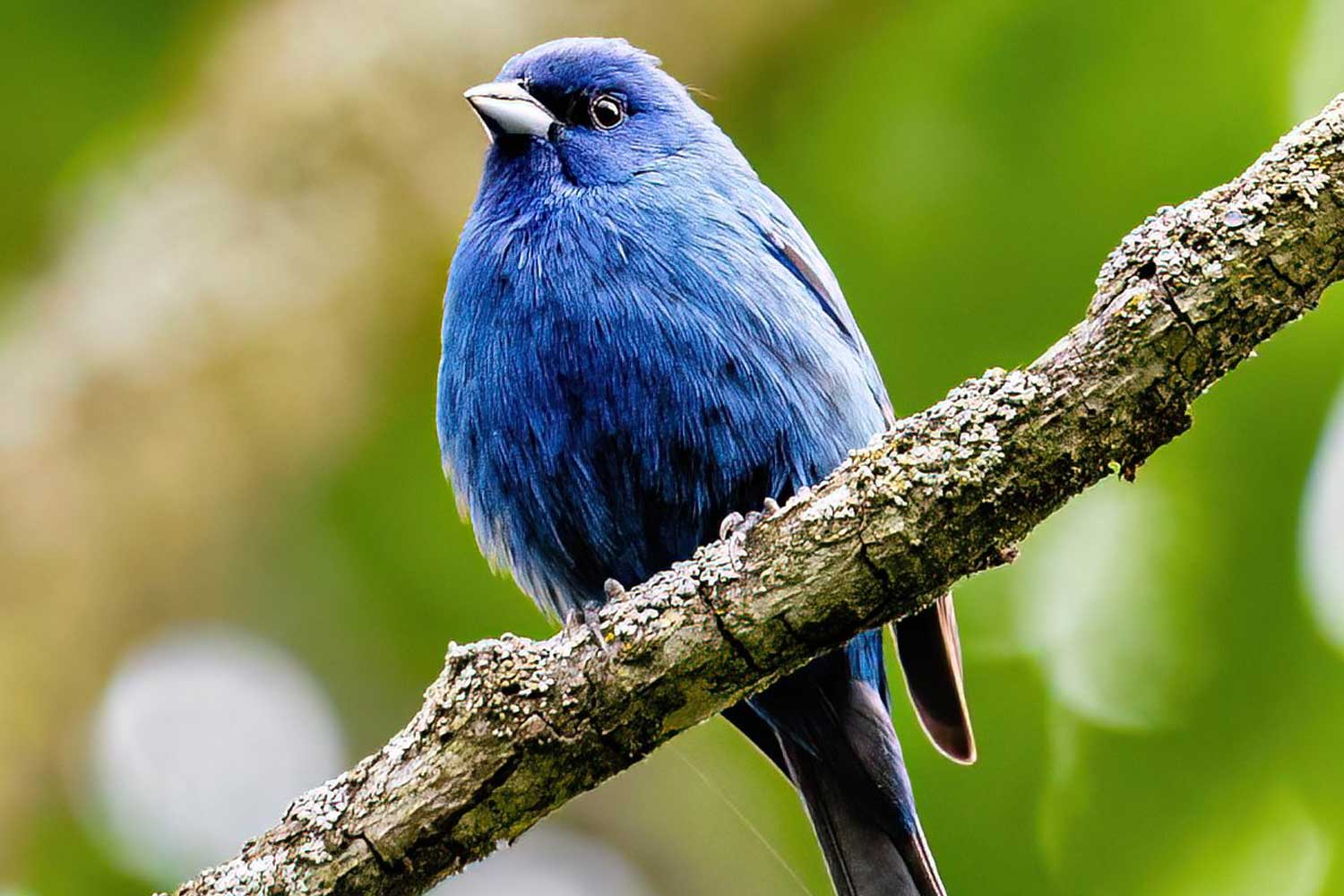Indigo buntings shine brightly in summer skies
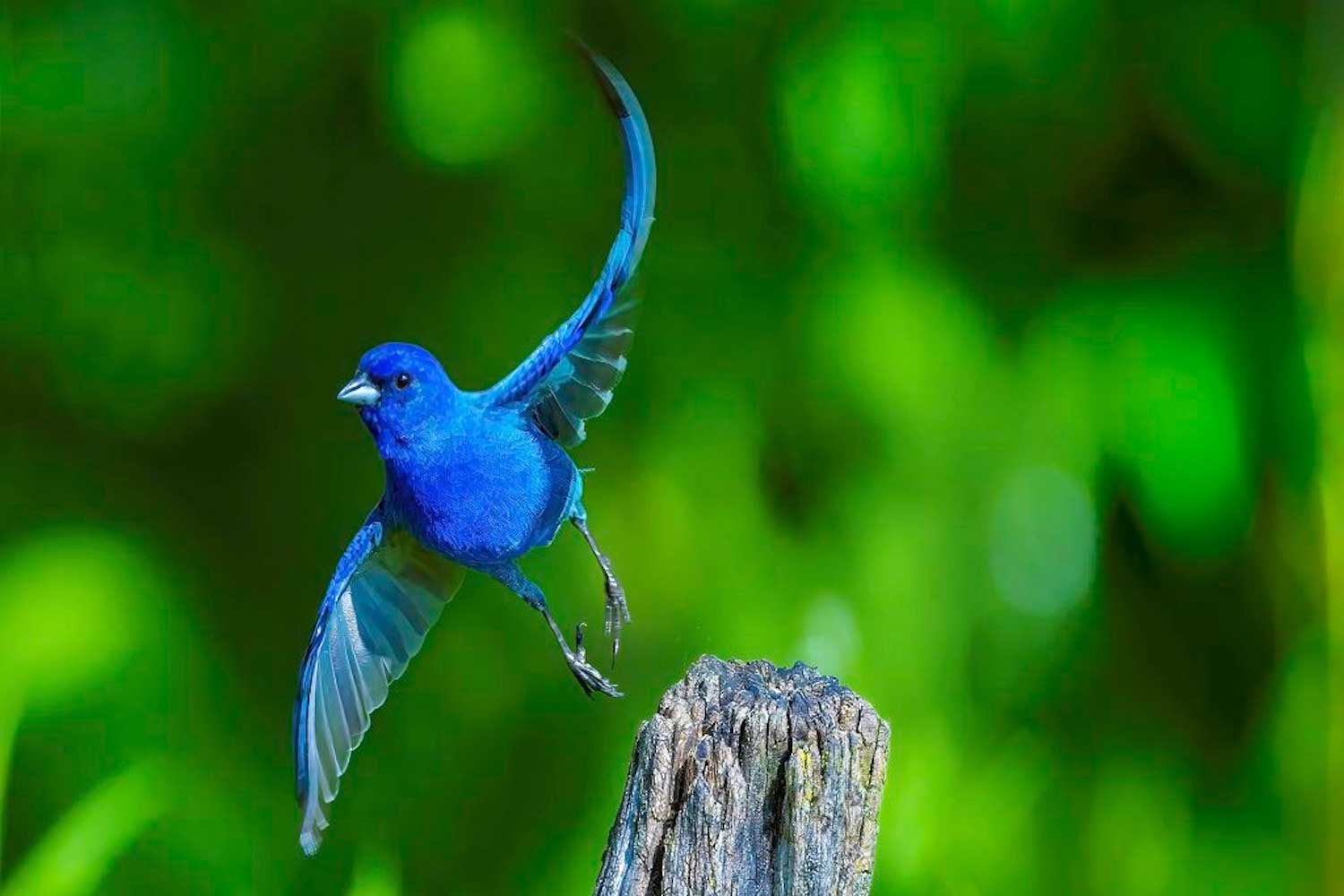
A lot of blue birds are named for their blue color. Blue jays, eastern bluebirds and great blue herons all got their common names from their color. Another blue bird that is named for its hue that may not immediately come to mind is the indigo bunting.
Indigo buntings are a brilliantly bright shade of blue. In some light, they may even look turquoise. But as is common with songbirds, it's just the adult males that sport the show-stopping color — and they are only bright blue during breeding season because the bright color helps them attract a mate. Outside of breeding season, the males still show some blue, but they have patches of brown and blue and aren't as vibrant as they are in summer months, according to the Cornell Lab of Ornithology. Female and juvenile indigo buntings are almost entirely brown, but you may see a hint of blue on their wings and tails.
Another similarity indigo buntings share with other blue birds is that their blue color is an optical illusion. Their feathers don't actually have blue pigment; they just appear blue because of pockets of air and keratin in their feathers that refract and reflect the blue wavelength of light. The process is known as light scattering, and it's the same reason the sky appears blue.
If a flash of bright blue doesn't get your attention, the sweet song of the indigo bunting might. Only the males sing, and they tend to repeat their notes in series of twos, calling what might sounds like "What, what? Where, where? See it, see it," according to the Cornell Lab. While the pattern is generally the same, the notes of the tune can vary from place to place because the birds learn how to sing their song from other indigo buntings who live nearby.
Indigo buntings are migratory, arriving each spring around the same time as some of our most anticipated birds — hummingbirds, orioles and rose-breasted grosbeaks. Their journey is a long one, with the birds traveling as far as 1,200 miles each spring and fall between their breeding grounds and their wintering grounds in southern Florida, Mexico, Central America and South America, the Cornell Lab reports.
Like many other birds, indigo buntings migrate by night. They use the stars to help them navigate, and they played a key role in scientists learning how the stars help buntings and other birds know where to go on their long migrations. In the 1960s, researchers were able to demonstrate how birds use the stars by studying captive indigo buntings in a planetarium and then monitoring them in the outdoor night sky. They discovered that the birds are able to orient themselves to a star even as the star moves in the sky, according to the Cornell Lab.
Their diet changes throughout the year based on what is available. In the summer, when they need more protein for breeding and nesting, they mostly eat insects and spiders, according to the American Bird Conservancy. Outside of breeding season, they eat berries, seeds and other plant matter. They don't visit backyard bird feeders as often as some bird species, but you may be able to attract them with nyjer and thistle.
These birds prefer shrubby or brushy areas, so they are often found near the edges of forests and woodlands, according to the Cornell Lab of Ornithology. They live across Illinois, and their range includes the eastern United States and parts of the southwest.
Indigo buntings typically nest in fields or open areas near woodlands, and they usually build their nests no more than 3 feet off the ground. The females construct the nests alone, using grasses, leaves, stems and other materials to weave together a cup-shaped nest, the Cornell Lab reports. After mating, the female will lay three or four eggs and incubate them for 11 to 14 days before they hatch. The nestlings stay in the nest for a week or two before fledging.
The population of indigo buntings has declined about 28% since 1966, but they remain common across their range so they are not a species of conservation concern, the Cornell Lab reports. Their worldwide population is estimated at 77 million.
The indigo bunting is one of several buntings in North America. The only other bunting we regularly see in northern Illinois is the dickcissel, although the snow bunting may be seen here occasionally in the winter months. Many buntings sport bright, eye-catching colors, perhaps none more so than the painted bunting. These brightly colored birds have blue heads, red breasts and a green back and wings.
